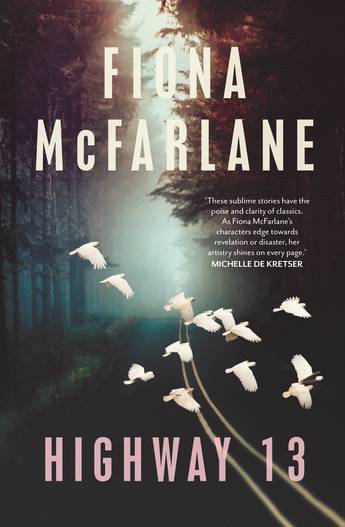Fiona McFarlane’s The Sun Walks Down was one of my absolute favourite novels of the last couple of years, so I was excited to buy her new collection of short stories, Highway 13 (Allen and Unwin 2024). And I was not disappointed. McFarlane is an assured and accomplished writer and her prose is beautiful to read.
In Highway 13, she has written 12 stories, all with some tangential thread to the repercussions of the actions of a serial killer, his crimes reverberating throughout the lives of ordinary people who feature as the central protagonists in each story. The killer is arrested and charged in 1998 for a series of horrific crimes against backpackers along Highway 13 (sound familiar?) but the book does not centre on these specific crimes, or even his arrest and trial, but rather on the myriad of ways in which his life, his actions, his very being, has affected people years after, or even years before, this comes to light.
The killer’s hometown is in country Australia but the stories are set as far afield as the US, Italy and far-north Queensland, covering the victims’ families, the nation that is shocked and disrupted and frightened by the crimes, true crime podcasts that retell the story, and people’s lives even before the crime spree began. Each is set in a different year, from 1950 and 1986, to 1995 and 2003, to the current day 2024 and into the future of 2028.
Tourists is an unsettling story which opens the collection, providing some background to ‘Murder Town’ and how locals view the area now forever tainted with the killer’s actions. Hunter on the Highway explores backpacking and the hidden secrets and fears between couples. Abroad explores every parent’s worst nightmare. Demolition centres on the eventual destruction of the killer’s former home, and people’s memories of the house before it was infamous. Democracy Sausage navigates the unfortunate coincidence of an ambitious politician sharing the same name as the well-known murderer. I loved the brilliant Chaperone, a tale of a nun shepherding a group of schoolgirls on a trip to Rome, and the understated grace of The Wake. The last story, Lucy, set in 1950, provides historical context that elevates our knowledge and understanding of all we have read previously.
Every story is different, each is written with concise, sharp, sometimes witty, sometimes poignant prose. In some stories the connection to the killer is clear and disturbing; in others, it is as peripheral as a mere hint. McFarlane uses a variety of voices and points of view, and her stories occasionally have an unusual structure. Inevitably, some will resonate more with readers than others. But as a whole, the collection is strong, intelligent, thought-provoking, captivating and compelling, every story contributing to the fear of the unknown, the fear of the known but misunderstood, the fear of what we cannot see, and the often-greater fear of what we can see. Characters are frightened by their own knowledge and cannot accept it. Others are uncomfortably ignorant of what is obvious to the reader. Others are living ordinary lives, a mere degree of separation from what could be tragedy, without realising it. And always there is the crime/s at the centre, and the history, and the stories and gossip told about the murders and the killer, and the way those stories are retold and reshaped until they become almost a character in themselves.
A remarkable collection that once again demonstrates McFarlane’s skill and writing prowess.

